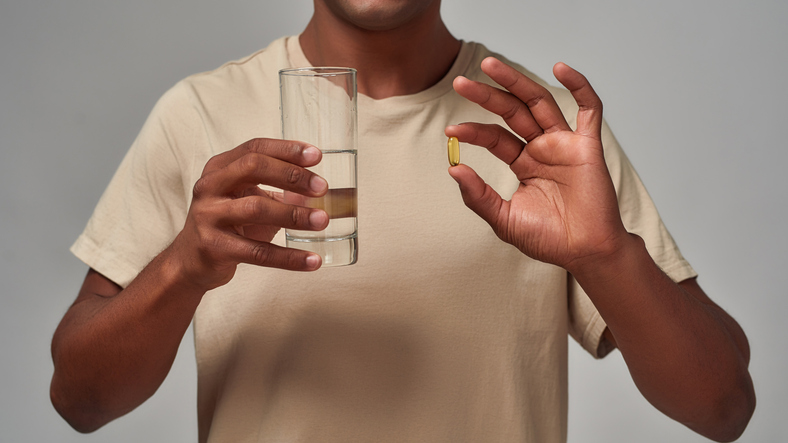A Possible Future Treatment Option for Male Hypogonadism

Male hypogonadism is the medical term for low testosterone (the main male sex hormone). Historically, oral testosterone was not used to treat male hypogonadism due to the risk of hepatotoxicity, or damage to the liver. However, two oral testosterone formulations have now been approved by the FDA, and several other formulations seem to be on the horizon.
The symptoms of male hypogonadism vary among patients, depending on when they acquire it and the severity of their testosterone deficiency. Boys and young adults with this condition might see a delay or absence of usual physical changes during puberty, including deepening voice, facial and body hair growth, muscle development, and the growth of the penis and testicles. Adults with male hypogonadism may experience erectile dysfunction (ED), decreased sex drive and energy, low sperm count, depression, loss of muscle mass or strength, loss of facial or body hair, increased body fat, osteoporosis (loss of bone mass), and/or enlargement of breasts.
Health care providers treat male hypogonadism with testosterone replacement therapy with the goal of getting a patient’s testosterone levels back within the normal range. Currently, individuals can take testosterone in several ways including injections, implants, gels that are applied to the upper arm, shoulder, or thighs, patches placed on the thighs, torso, or gums, and nasal applications of gel. Soon, oral testosterone treatment options may also become more widespread.
In a recent pharmaceutical study of men with male hypogonadism between the ages of 18-65, researchers tested the safety and efficacy of a new oral testosterone soft gelatin capsule. The participants of the trial had to have one or more symptoms associated with male hypogonadism and could not be taking other forms of testosterone at the time of the study. They completed 3 months (90 days) of treatment, and then their health was monitored by professionals for 9 months during the safety evaluation period.
The manufacturer of the oral testosterone capsules (Marius Pharmaceuticals) reported that more than 96% of the patients who completed 90 days of treatment achieved testosterone levels within the normal range, and the most common negative side effect was high blood pressure. Based on these results, the FDA has accepted a new drug application for this oral testosterone and approved a 6-month extension for the trial. Time will tell if the FDA will approve this new oral testosterone treatment option for male hypogonadism, but the initial results are promising.
Resources:
Broderick, J.M. (2021, March 11). FDA accepts application for novel testosterone replacement therapy for hypogonadism. Urology Times. https://www.urologytimes.com/view/fda-accepts-application-for-novel-trt-for-hypogonadism
Davis, K. (2017, Nov. 23). What you need to know about male hypogonadism. Medical News Today. https://www.medicalnewstoday.com/articles/307634
Mayo Clinic. (2019, Nov. 5). Male Hypogonadism – Symptoms and Causes. https://www.mayoclinic.org/diseases-conditions/male-hypogonadism/symptoms-causes/syc-20354881#:~:text=Overview,often%20from%20injury%20or%20infection
You may also be interested in...
Other Popular Articles

What Is the Average Penis Size?
If you have ever wondered how your penis compares to others in terms of size, you are not alone. Many men are curious to know how their penises stack up compared to the average. Unfortunately, general curiosity can sometimes give way to full-on obsession and anxiety about penis size. This can be an unhealthy and often unnecessary fixation, especially because most men who think their penises are too small have perfectly normal-sized penises.

What Is Jelqing, and Does It Actually Work?
The term “jelqing” refers to a set of penis stretching exercises that some believe can make the penis bigger. Although the practice has gained attention and popularity in blogs and internet forums in recent years, there is no scientific evidence that it is an effective way to permanently increase the size of one’s penis. In fact, in some cases, jelqing may actually cause damage to the penis, so it is a good idea to get all the facts before setting off to try it.

What Is Sensate Focus and How Does It Work?
Sensate focus is a technique used to improve intimacy and communication between partners around sex, reduce sexual performance anxiety, and shift away from ingrained, goal-oriented sexual patterns that may not be serving a couple.

Can Sex Reduce Menstrual Cramps?
The SMSNA periodically receives and publishes ‘guest editorials.’ The current article was submitted by Mia Barnes, a freelance writer and researcher who specializes in women's health, wellness, and healthy living. She is the Founder and Editor-in-Chief of Body+Mind Magazine.
Having sex while you experience menstrual cramps is healthy and can provide significant benefits. While it might not be the first activity that comes to mind when your PMS or period cramping begins, many people enjoy sex to reduce menstrual cramps, experience increased pleasure and benefit from other advantages. Learn more about having sex while menstrual cramps are happening and how it can help your body.

How Long Does It Take the Average Man to Ejaculate?
On average, it takes a man between 5 to 7 minutes to orgasm and ejaculate during sexual intercourse.

The Effect of Regular Aerobic Exercise on Erectile Function
Erectile dysfunction (ED) is the inability to achieve or maintain an erection sufficient for satisfactory sexual activity. As men get older, their erectile functioning may naturally decline due to changes in testosterone levels, cardiovascular functioning, and the potential development of other chronic medical conditions that become more common with age.
You are prohibited from using or uploading content you accessed through this website into external applications, bots, software, or websites, including those using artificial intelligence technologies and infrastructure, including deep learning, machine learning and large language models and generative AI.

